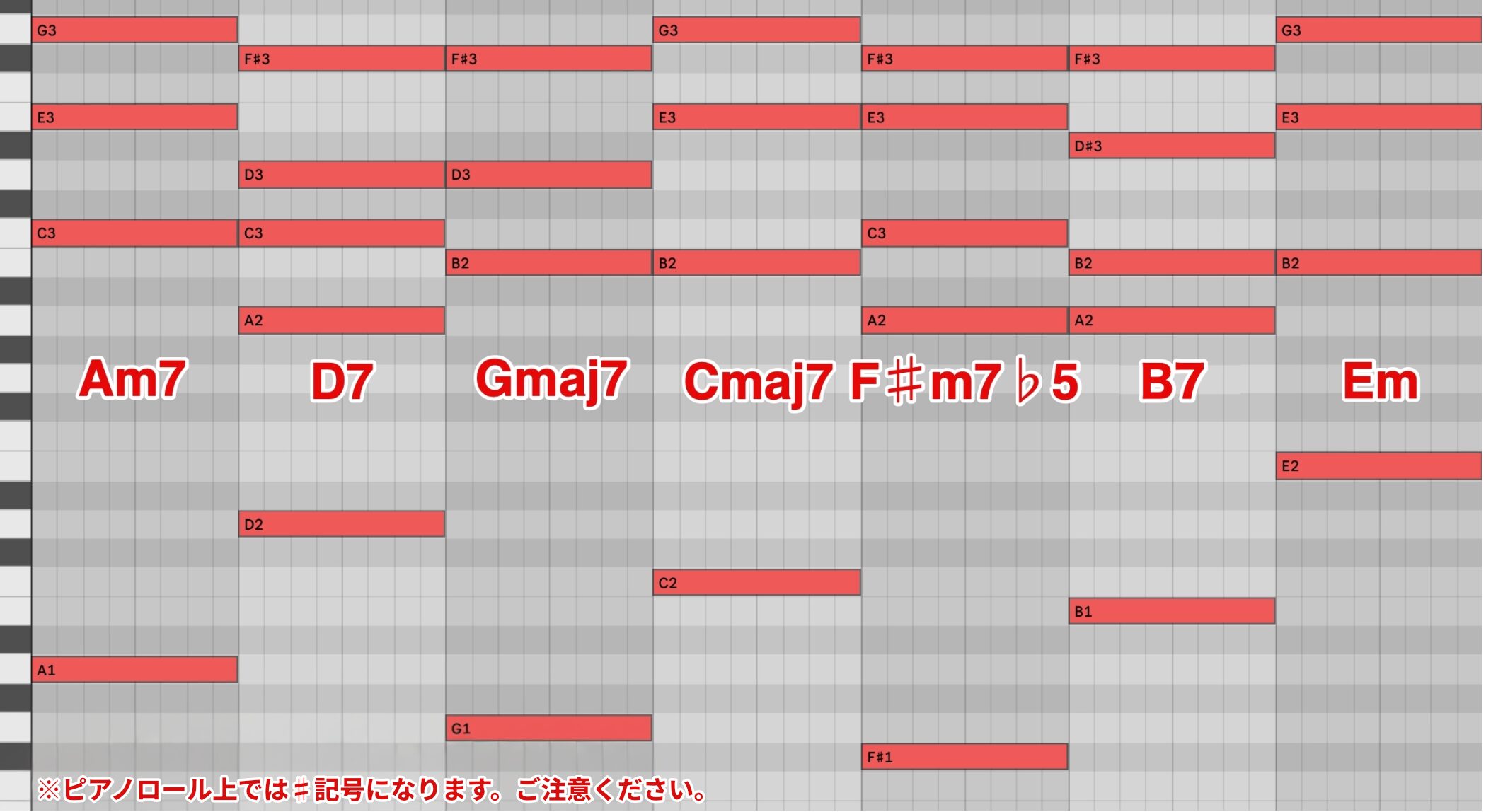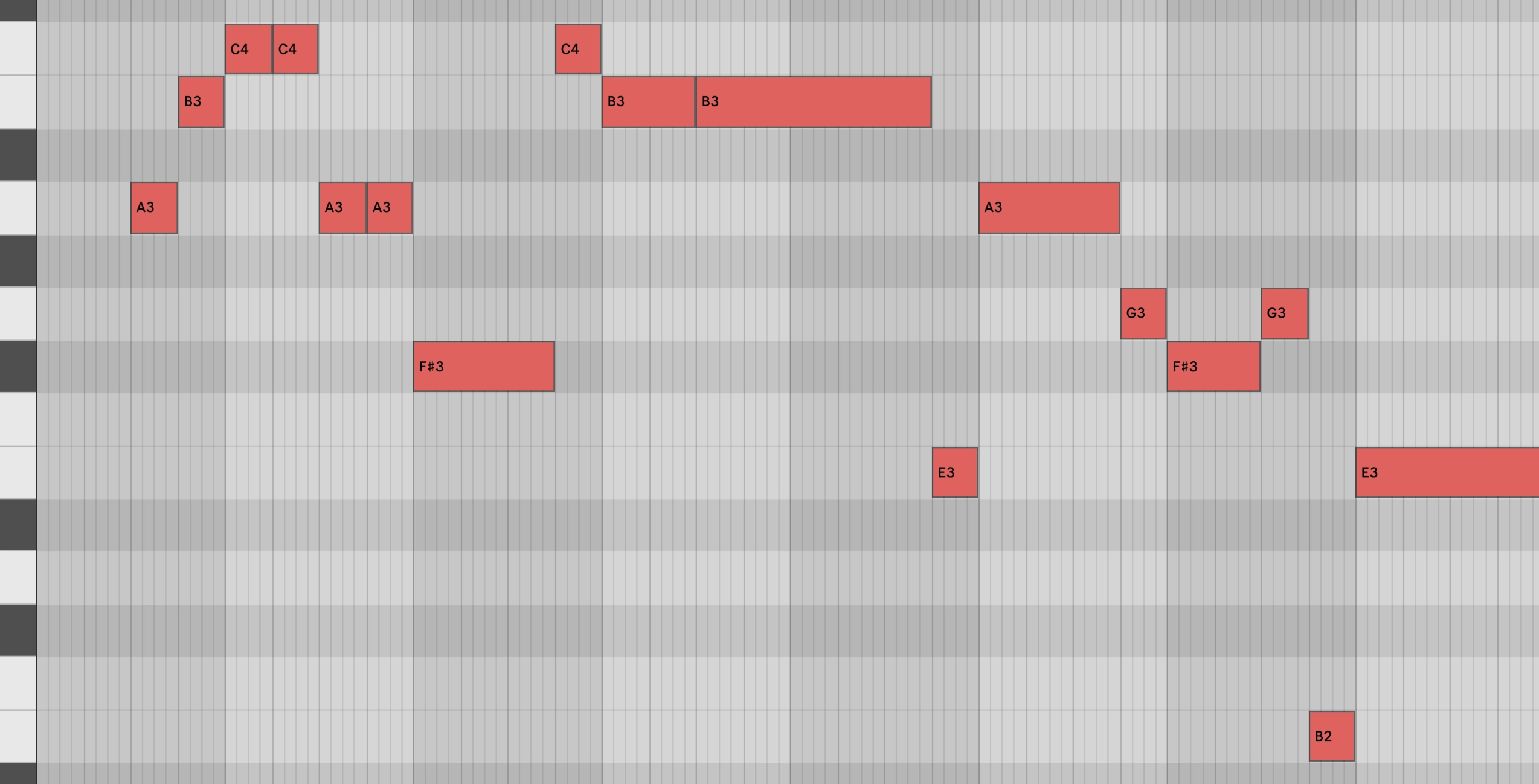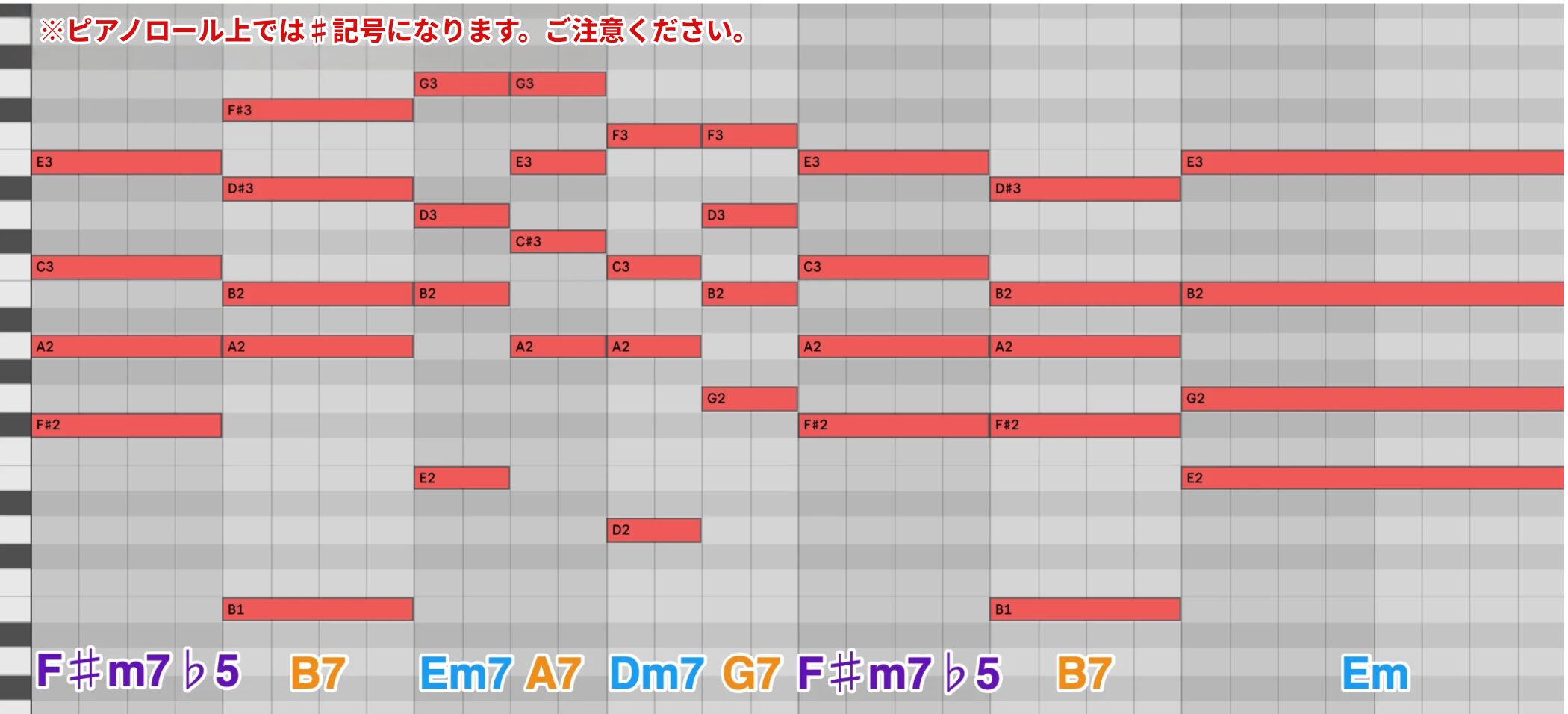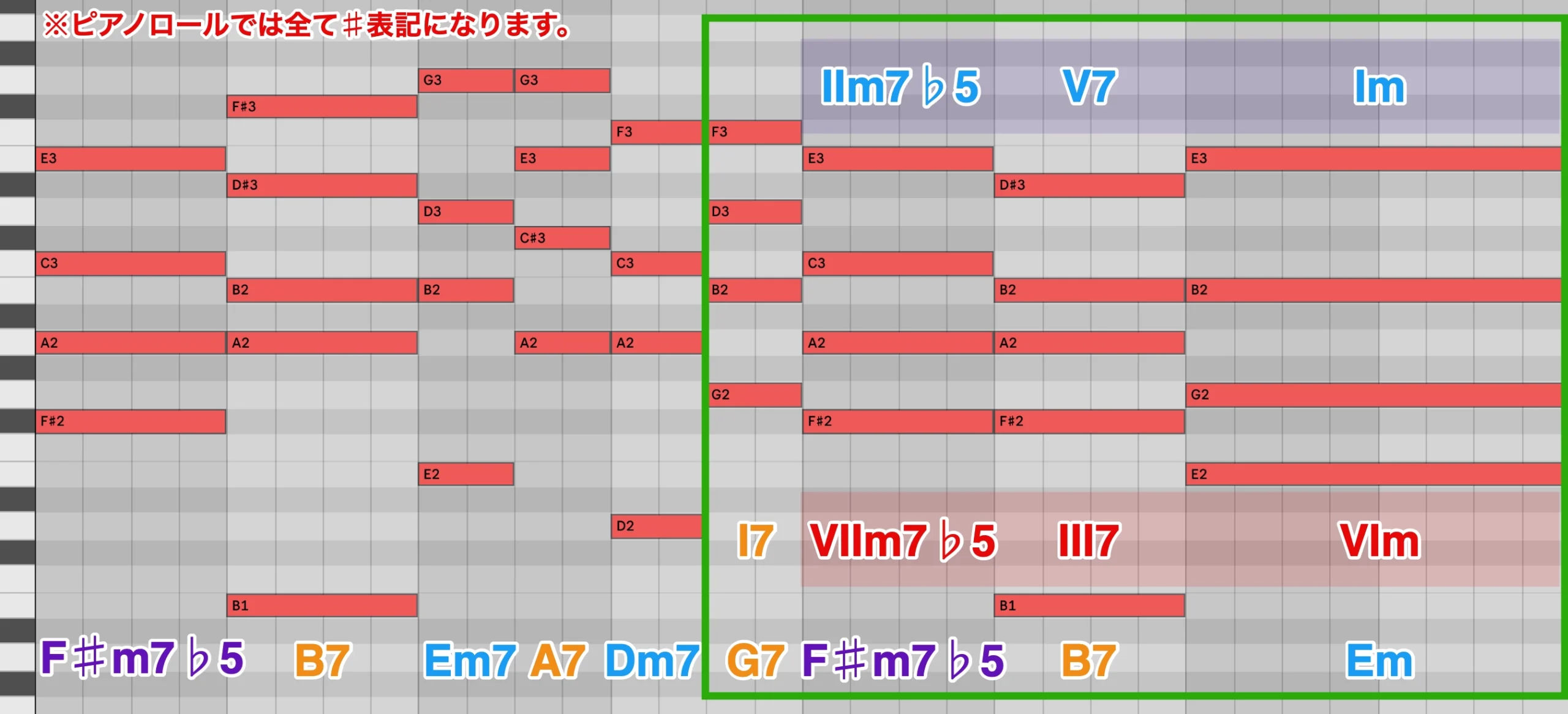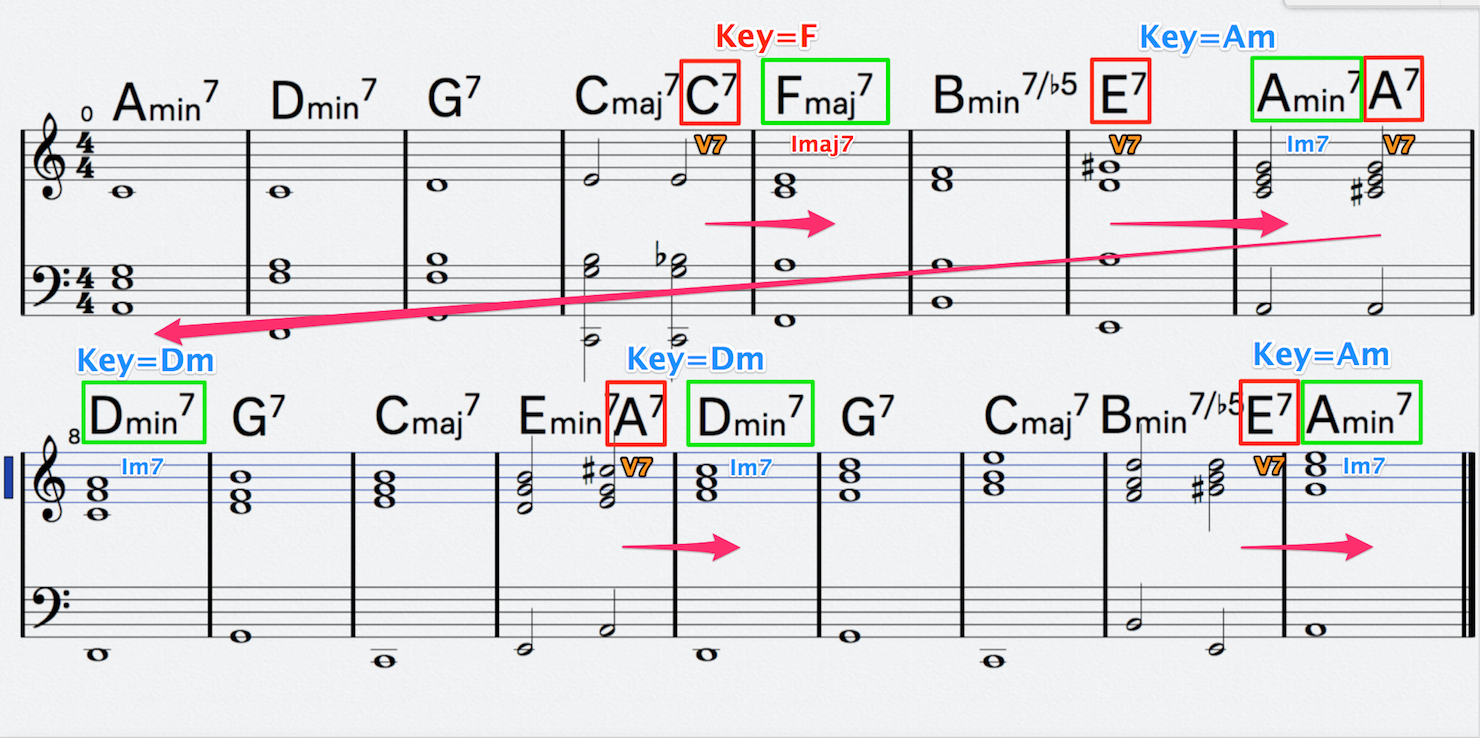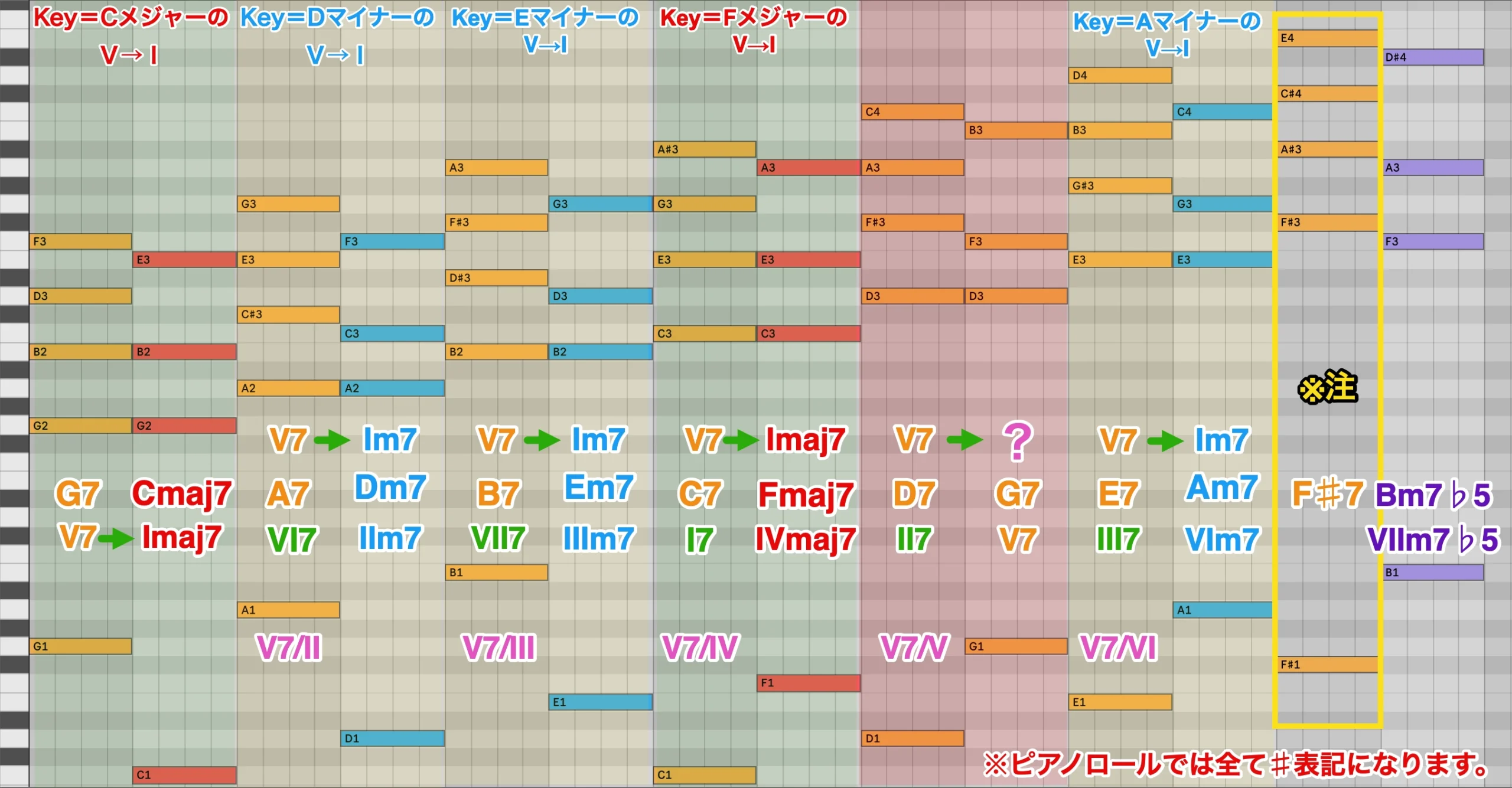セカンダリー・ドミナント⑥ 実践編3「あえて解決しない①」/音楽理論講座
あえて解決しない流れを理解する

今回は、これまでに学んだセカンダリー・ドミナントの知識を活用し、コード進行を分析した際に出てくる、今までにない使い方について確認してみましょう。
楽曲は、本講座でおなじみの「Les Feuilles Mortes(Autumn Leaves)」で進めていきます。
メロディーは上図になります。
サンプルはKey=Gメジャー、もしくはEmでしたね。
コードは上図のようになります。
あわせて聴いてみましょう。
✳︎譜面によっては、これ以外のコードで書いてある場合もあります
第55回目とは違い、後半部分を聴いてみましょう。
コードとメロディーのシンプルなバージョンで確認します。
まずはメロディーを聴いてみましょう。
次にコードと合わせて聴いてみます。
コード進行を解析する
コード進行を解析していきます。
緑色の四角で囲んだ箇所を意識して、もう一度聴いてみましょう。
今までの内容を思い出して、ディグリーネームを書き込んでみましょう。
現在はKey=Gメジャーで解析していますが、難しければKey=Cメジャーにしてみても良いかもしれません。
Key=Cメジャーに変更してみました。
こちらも聴いてみましょう。
次に、上記の緑の四角のコードからノンダイアトニックコードの箇所を確認してみましょう。
黄色の四角で囲ったIII7(マイナーのV7)のE7とI7のC7が、ノンダイアトニックコードとなります。
E7は、今まで通りに解決していますね。
V7/VI
AmをImと捉えた場合のV7(V)は、E7(E)となります。
ですが、C7はどうでしょう?
今までの流れであれば、現在学んでいるセカンダリー・ドミナントで「ノンダイアトニッ クコードの箇所=V→Iの関係でしょ?」となりそうですが…。
ここで、「Fly Me to the Moon (In Other Words)」の譜面を思い出してみましょう。
- シンプルなコードのみの場合
今まで学んできたもののおさらいをしてみましょう。
V7/IV
いつもはIVに進行していましたが、今回の譜面ではIVではなく、VIIm7b5に進行しています。
しかしながら、特に違和感は感じられませんでした。
この「セカンダリードミナントがIに解決していない場合がある」という意識を持ったまま、次回は今までとは違った使い方を確認していきます。








